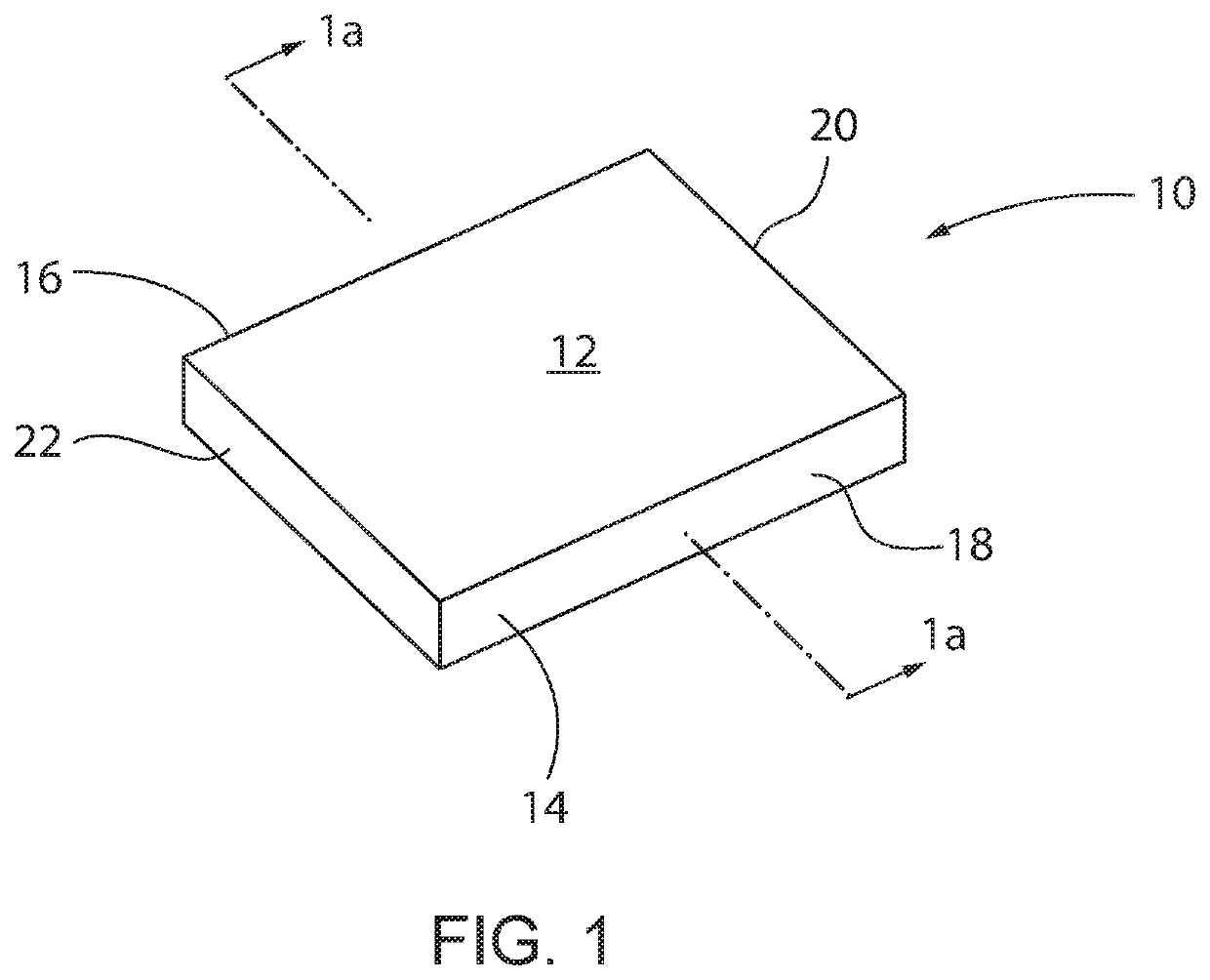Covering And Method Of Forming A Covering For A Hatch Door
a hatch door and cover technology, applied in the field of floor coverings, can solve the problems of marine carpet on the deck of marine vehicles, difficult cleaning of marine carpet, significant wear, etc., and achieve the effects of simple and easy mounting, simple and easy manufacturing, and easy cleaning
- Summary
- Abstract
- Description
- Claims
- Application Information
AI Technical Summary
Benefits of technology
Problems solved by technology
Method used
Image
Examples
Embodiment Construction
[0036]Referring to FIGS. 1 and 1a, a sheet of polymer foam utilized in the methodology of the present invention is generally designated by the reference number 10. Sheet 10 has a generally rectangular configuration and is defined by first surface 12 and second surface 14. First surface 12 and second surface 14 are preferably generally parallel faces or surfaces, located and positioned opposite from each other. First surface 12 and second surface 14 are further spaced apart by first side 16 and second side 18, as well as, first end 20 and second end 22. First side 16 and second side 1S are preferably generally parallel to each other. Similarly, first end 20 and second end 22 are also generally parallel to each other. Both first end 20 and second end 22 are generally perpendicular to both first side 16 and second side 18. Thus, first side 16, second side 18, first end 20, and second end 22 extend between first surface 12 and second surface 14.
[0037]Referring to FIGS. 2 and 2a, in oper...
PUM
| Property | Measurement | Unit |
|---|---|---|
| perimeter | aaaaa | aaaaa |
| thickness | aaaaa | aaaaa |
| colors | aaaaa | aaaaa |
Abstract
Description
Claims
Application Information
 Login to View More
Login to View More - R&D
- Intellectual Property
- Life Sciences
- Materials
- Tech Scout
- Unparalleled Data Quality
- Higher Quality Content
- 60% Fewer Hallucinations
Browse by: Latest US Patents, China's latest patents, Technical Efficacy Thesaurus, Application Domain, Technology Topic, Popular Technical Reports.
© 2025 PatSnap. All rights reserved.Legal|Privacy policy|Modern Slavery Act Transparency Statement|Sitemap|About US| Contact US: help@patsnap.com



